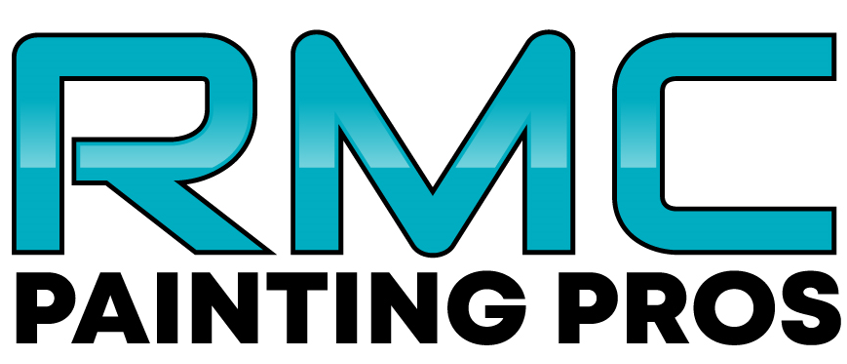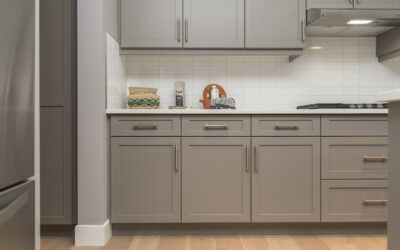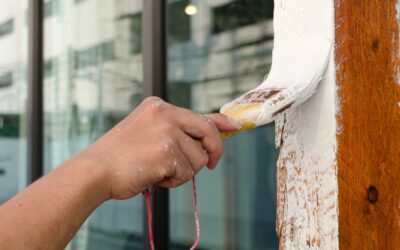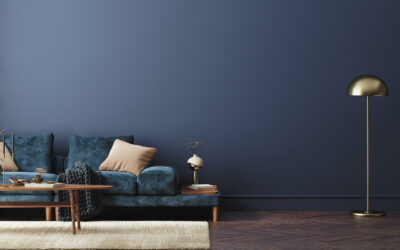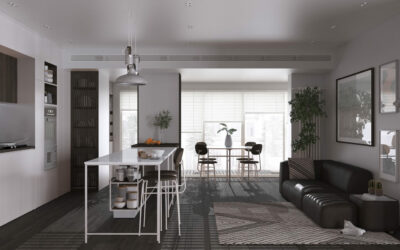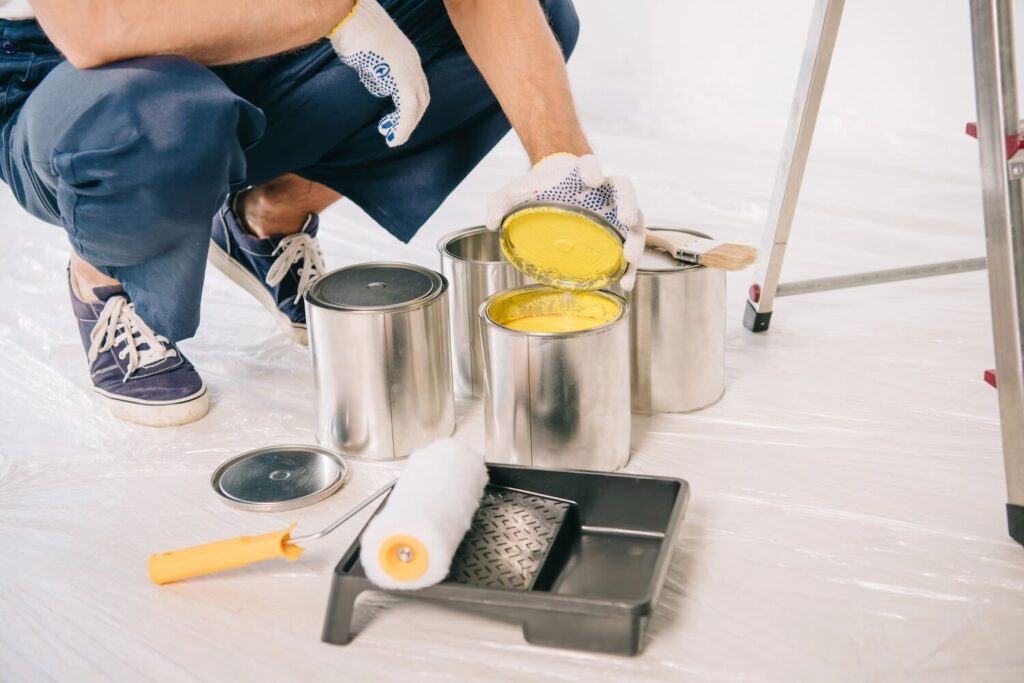
Interior painting is one of the most cost-effective ways to refresh and revitalize a space. Whether you’re preparing your home for sale, updating the look of a room, or simply indulging in a much-needed refresh, painting your walls can make a significant difference. However, the costs associated with hiring a professional painter can vary widely. Understanding these costs and how to evaluate a quote is essential for making an informed decision and ensuring you get the best value for your investment.
In this article, we will explore the factors that contribute to interior painting costs, how to break down a quote, and how to identify a reasonable price. By the end, you’ll have a clearer understanding of what’s involved and how to make an educated choice when hiring an interior painter.
Understanding Interior Painting Costs
The cost of interior painting varies greatly depending on a number of factors. By breaking down these factors, you’ll get a better idea of what is included in the price and why certain jobs might cost more than others. Let’s dive into the primary considerations that influence painting costs.
1. Size of the Painting Area
The square footage of the space being painted is often the most significant factor when it comes to interior painting costs. Naturally, the larger the area, the more it will cost to paint. Painters typically charge by the square foot or by the room, so it’s important to understand how square footage impacts your quote.
Estimating Square Footage
Measuring the area to be painted is a simple but crucial step in understanding the potential cost. Here’s how you can estimate the square footage:
- Measure each wall: Begin by measuring the height and width of each wall in the room. Then, multiply the height by the width to calculate the square footage of each individual wall.
- Subtract windows and doors: Don’t forget to account for windows and doors, which do not require paint. Measure each window and door, then subtract the total area from the overall square footage of the walls.
- Add up the totals: Once you have the measurements of all the walls and have subtracted the windows and doors, add up the total square footage. This figure will help you assess how much paint will be needed and how long the job may take.
2. Type of Interior Paint
Another significant factor in the cost of interior painting is the type of paint chosen. Different paints come at different price points, and this can have a substantial effect on the overall cost. Here are the most common paint types used in interior projects:
Flat/Matte Finish
- Characteristics: Flat or matte finishes have no sheen and are excellent for hiding imperfections on walls.
- Cost: Generally, this type of paint is the least expensive, which makes it a budget-friendly option for large areas or spaces with imperfections. However, flat paint can be more challenging to clean, so it’s often used in lower-traffic areas like bedrooms or ceilings.
Eggshell/Satin Finish
- Characteristics: Eggshell and satin finishes have a slight sheen and are more durable than flat finishes. They are often used for living rooms, dining rooms, and hallways.
- Cost: These finishes are moderately priced and offer a good balance of durability and aesthetics.
Semi-Gloss/Gloss Finish
- Characteristics: Semi-gloss and gloss finishes are highly durable and easy to clean, making them ideal for high-traffic areas, kitchens, bathrooms, and trim work. They reflect light and provide a more polished appearance.
- Cost: These finishes tend to be the most expensive, as they require higher-quality paint for optimal results.
The choice of finish will influence not just the overall cost but also the longevity and maintenance of your painted surfaces. While higher-quality finishes can cost more upfront, they may save you money in the long run due to their durability and ease of cleaning.
3. Painting Labor Costs
Labor is one of the largest expenses when it comes to interior painting. The cost of labor can vary significantly based on the location, the painter’s experience, and the complexity of the job. The average labor rate for professional painters can range anywhere from $20 to $50 per hour, though it could be higher depending on where you live and the painter’s expertise.
Factors That Influence Labor Costs
- Location: Painters in major metropolitan areas or high-cost regions may charge more due to the higher cost of living and business overhead.
- Experience: Experienced painters may charge a premium for their services because they bring superior craftsmanship, efficiency, and expertise. While this may increase upfront costs, you are often paying for a higher quality of work that could last longer and require fewer touch-ups.
- Job Complexity: Labor costs can also increase based on the complexity of the job. For instance, painting intricate trim, ceilings, or textured walls will take more time and skill, leading to higher costs.
Estimating Labor Hours
A professional painter will typically estimate how many hours it will take to complete your job. To get an accurate idea of what you’re paying for, ask for a breakdown of labor hours and rates. For instance, a painter may estimate 4 to 6 hours for a standard room and factor in additional time for prep work and finishing touches.
4. Additional Paint Services and Preparation
In addition to the paint and labor, there are often additional services and prep work required before painting can begin. These additional tasks can significantly impact the final cost of the project. Let’s look at some of these:
Surface Preparation
Proper preparation is critical for achieving a smooth, long-lasting finish. This may involve:
- Sanding: To create a smooth surface for painting.
- Patching: Filling holes, cracks, and imperfections in the walls.
- Priming: If you’re changing the color dramatically or painting over a surface that requires extra adhesion, a primer will be necessary. Primer can add to the material costs but ensures that the final color applies evenly and lasts longer.
Furniture Moving and Protection
Moving furniture out of the way and protecting floors, furniture, and fixtures from paint splatters is often part of the service provided by professional painters. Some companies may include this in the price, while others may charge an additional fee.
Trim and Ceiling Painting
If you are having trim, baseboards, or ceilings painted, this will be an additional cost. These areas require more precise work, so they take longer to paint, which increases both material and labor costs.
Breaking Down a Quote
Now that you understand the components that make up the cost of interior painting, let’s break down what a comprehensive quote should look like.
1. Line Item Costs Breakdown
A clear and professional quote should outline each element of the project, broken down into categories. These categories might include:
- Paint and Materials: The cost of the paint, primer, brushes, rollers, drop cloths, and any other materials required.
- Labor: The total labor cost based on the estimated hours and hourly rate.
- Additional Services: Costs for additional work like prep work, furniture moving, and ceiling or trim painting.
2. Paint Quality and Paint Brand
Your quote should include information on the paint being used, such as the brand, finish, and type of paint. If a specific brand or premium-quality paint is being used, this can justify a higher price point.
3. Detailed Timeline
The quote should also include an estimated timeline for the project, including start and finish dates, as well as the expected duration of each phase of the project. This helps you set expectations and avoid any surprises.
4. Painting Warranty Information
A professional painter will often offer a warranty on both the materials and their work. This could range from a one-year warranty to a multi-year warranty, depending on the type of paint and the company’s policy. Always ask for this information upfront and read the fine print to understand what’s covered.
How to Spot a Reasonable Quote
Once you have a quote in hand, it’s time to assess whether it’s reasonable. Here are some tips to help you evaluate the offer:
1. Obtain Multiple Quotes
Never settle for the first quote you receive. Always obtain at least three quotes from different painters to get an idea of the going rates in your area. Be sure to ask for detailed breakdowns, as this will allow you to compare not only the price but also the quality of service offered.
2. Look for Transparency
A reputable painter should be willing to explain their quote and provide clarity on any charges that you don’t understand. Transparency in pricing is crucial because it ensures there are no hidden fees or surprise costs down the line.
3. Beware of Low Bids
While it may be tempting to go with the lowest price, extremely low bids often raise red flags. This could indicate that the painter is using subpar materials or cutting corners with the preparation work. Always ask about the paint quality and labor involved to ensure you’re getting the value you expect.
4. Consider the Reputation
Check the painter’s reputation before accepting a quote. Read online reviews, ask for references, and look at examples of their previous work. A company with a solid reputation may justify a slightly higher price due to their reliability and quality craftsmanship.
5. Factor in Experience
Experienced painters often charge more for their expertise, but they can also save you money in the long run by completing the job faster and with fewer issues. If a painter has been in business for many years and has a solid track record, their higher rate might be well worth it.
Conclusion
Understanding the factors that contribute to interior painting costs and how to evaluate a quote is essential for making an informed decision. Whether you’re tackling a single room or an entire house, ensuring that you’re getting a reasonable price requires careful consideration of the materials, labor, and additional services involved.
While cost is always a factor, it’s important to remember that the quality of the job and the experience of the painter will ultimately determine the value of your investment. By doing your research and asking the right questions, you can find a professional interior painter who offers both fair pricing and exceptional service, ensuring that your interior painting project is a success.
When in doubt, always hire a professional who can provide a detailed and transparent quote that meets your expectations and gives you peace of mind throughout the process.
Read Other Blog Posts
Transform Your Kitchen: How Cabinet Painting Can Make a Big Impact
A kitchen is often the heart...
Repair, Restore, Repaint: The Power of Professional Dry Rot Solutions and Services
Dry rot is often viewed with...
Quality Contractor Counts: Why Investing in Professional Interior Painting Pays Off
When it comes to home...
How General Contractors & Painters Collaborate for a Stunning Renovation Project
Renovating a space is a...
The Ultimate Guide to Choosing the Right Paint Finish for Every Room
When it comes to painting your...
Shield Your Investment: How Fresh Exterior Paint Extends Home Longevity
A fresh coat of exterior paint...
Interior painting is one of the most cost-effective ways to refresh and revitalize a space. Whether you’re preparing your home for sale, updating the look of a room, or simply indulging in a much-needed refresh, painting your walls can make a significant difference. However, the costs associated with hiring a professional painter can vary widely. Understanding these costs and how to evaluate a quote is essential for making an informed decision and ensuring you get the best value for your investment.
In this article, we will explore the factors that contribute to interior painting costs, how to break down a quote, and how to identify a reasonable price. By the end, you’ll have a clearer understanding of what’s involved and how to make an educated choice when hiring an interior painter.
Understanding Interior Painting Costs
The cost of interior painting varies greatly depending on a number of factors. By breaking down these factors, you’ll get a better idea of what is included in the price and why certain jobs might cost more than others. Let’s dive into the primary considerations that influence painting costs.
1. Size of the Area
The square footage of the space being painted is often the most significant factor when it comes to interior painting costs. Naturally, the larger the area, the more it will cost to paint. Painters typically charge by the square foot or by the room, so it’s important to understand how square footage impacts your quote.
Estimating Square Footage
Measuring the area to be painted is a simple but crucial step in understanding the potential cost. Here’s how you can estimate the square footage:
- Measure each wall: Begin by measuring the height and width of each wall in the room. Then, multiply the height by the width to calculate the square footage of each individual wall.
- Subtract windows and doors: Don’t forget to account for windows and doors, which do not require paint. Measure each window and door, then subtract the total area from the overall square footage of the walls.
- Add up the totals: Once you have the measurements of all the walls and have subtracted the windows and doors, add up the total square footage. This figure will help you assess how much paint will be needed and how long the job may take.
2. Type of Paint
Another significant factor in the cost of interior painting is the type of paint chosen. Different paints come at different price points, and this can have a substantial effect on the overall cost. Here are the most common paint types used in interior projects:
Flat/Matte Finish
- Characteristics: Flat or matte finishes have no sheen and are excellent for hiding imperfections on walls.
- Cost: Generally, this type of paint is the least expensive, which makes it a budget-friendly option for large areas or spaces with imperfections. However, flat paint can be more challenging to clean, so it’s often used in lower-traffic areas like bedrooms or ceilings.
Eggshell/Satin Finish
- Characteristics: Eggshell and satin finishes have a slight sheen and are more durable than flat finishes. They are often used for living rooms, dining rooms, and hallways.
- Cost: These finishes are moderately priced and offer a good balance of durability and aesthetics.
Semi-Gloss/Gloss Finish
- Characteristics: Semi-gloss and gloss finishes are highly durable and easy to clean, making them ideal for high-traffic areas, kitchens, bathrooms, and trim work. They reflect light and provide a more polished appearance.
- Cost: These finishes tend to be the most expensive, as they require higher-quality paint for optimal results.
The choice of finish will influence not just the overall cost but also the longevity and maintenance of your painted surfaces. While higher-quality finishes can cost more upfront, they may save you money in the long run due to their durability and ease of cleaning.
3. Labor Costs
Labor is one of the largest expenses when it comes to interior painting. The cost of labor can vary significantly based on the location, the painter’s experience, and the complexity of the job. The average labor rate for professional painters can range anywhere from $20 to $50 per hour, though it could be higher depending on where you live and the painter’s expertise.
Factors That Influence Labor Costs
- Location: Painters in major metropolitan areas or high-cost regions may charge more due to the higher cost of living and business overhead.
- Experience: Experienced painters may charge a premium for their services because they bring superior craftsmanship, efficiency, and expertise. While this may increase upfront costs, you are often paying for a higher quality of work that could last longer and require fewer touch-ups.
- Job Complexity: Labor costs can also increase based on the complexity of the job. For instance, painting intricate trim, ceilings, or textured walls will take more time and skill, leading to higher costs.
Estimating Labor Hours
A professional painter will typically estimate how many hours it will take to complete your job. To get an accurate idea of what you’re paying for, ask for a breakdown of labor hours and rates. For instance, a painter may estimate 4 to 6 hours for a standard room and factor in additional time for prep work and finishing touches.
4. Additional Services and Preparation
In addition to the paint and labor, there are often additional services and prep work required before painting can begin. These additional tasks can significantly impact the final cost of the project. Let’s look at some of these:
Surface Preparation
Proper preparation is critical for achieving a smooth, long-lasting finish. This may involve:
- Sanding: To create a smooth surface for painting.
- Patching: Filling holes, cracks, and imperfections in the walls.
- Priming: If you’re changing the color dramatically or painting over a surface that requires extra adhesion, a primer will be necessary. Primer can add to the material costs but ensures that the final color applies evenly and lasts longer.
Furniture Moving and Protection
Moving furniture out of the way and protecting floors, furniture, and fixtures from paint splatters is often part of the service provided by professional painters. Some companies may include this in the price, while others may charge an additional fee.
Trim and Ceiling Painting
If you are having trim, baseboards, or ceilings painted, this will be an additional cost. These areas require more precise work, so they take longer to paint, which increases both material and labor costs.
Breaking Down a Quote
Now that you understand the components that make up the cost of interior painting, let’s break down what a comprehensive quote should look like.
1. Line Item Breakdown
A clear and professional quote should outline each element of the project, broken down into categories. These categories might include:
- Paint and Materials: The cost of the paint, primer, brushes, rollers, drop cloths, and any other materials required.
- Labor: The total labor cost based on the estimated hours and hourly rate.
- Additional Services: Costs for additional work like prep work, furniture moving, and ceiling or trim painting.
2. Paint Quality and Brand
Your quote should include information on the paint being used, such as the brand, finish, and type of paint. If a specific brand or premium-quality paint is being used, this can justify a higher price point.
3. Detailed Timeline
The quote should also include an estimated timeline for the project, including start and finish dates, as well as the expected duration of each phase of the project. This helps you set expectations and avoid any surprises.
4. Warranty Information
A professional painter will often offer a warranty on both the materials and their work. This could range from a one-year warranty to a multi-year warranty, depending on the type of paint and the company’s policy. Always ask for this information upfront and read the fine print to understand what’s covered.
How to Spot a Reasonable Quote
Once you have a quote in hand, it’s time to assess whether it’s reasonable. Here are some tips to help you evaluate the offer:
1. Obtain Multiple Quotes
Never settle for the first quote you receive. Always obtain at least three quotes from different painters to get an idea of the going rates in your area. Be sure to ask for detailed breakdowns, as this will allow you to compare not only the price but also the quality of service offered.
2. Look for Transparency
A reputable painter should be willing to explain their quote and provide clarity on any charges that you don’t understand. Transparency in pricing is crucial because it ensures there are no hidden fees or surprise costs down the line.
3. Beware of Low Bids
While it may be tempting to go with the lowest price, extremely low bids often raise red flags. This could indicate that the painter is using subpar materials or cutting corners with the preparation work. Always ask about the paint quality and labor involved to ensure you’re getting the value you expect.
4. Consider the Reputation
Check the painter’s reputation before accepting a quote. Read online reviews, ask for references, and look at examples of their previous work. A company with a solid reputation may justify a slightly higher price due to their reliability and quality craftsmanship.
5. Factor in Experience
Experienced painters often charge more for their expertise, but they can also save you money in the long run by completing the job faster and with fewer issues. If a painter has been in business for many years and has a solid track record, their higher rate might be well worth it.
Conclusion
Understanding the factors that contribute to interior painting costs and how to evaluate a quote is essential for making an informed decision. Whether you’re tackling a single room or an entire house, ensuring that you’re getting a reasonable price requires careful consideration of the materials, labor, and additional services involved.
While cost is always a factor, it’s important to remember that the quality of the job and the experience of the painter will ultimately determine the value of your investment. By doing your research and asking the right questions, you can find a professional interior painter who offers both fair pricing and exceptional service, ensuring that your interior painting project is a success.
When in doubt, always hire a professional who can provide a detailed and transparent quote that meets your expectations and gives you peace of mind throughout the process.
Read Other Blog Posts
Transform Your Kitchen: How Cabinet Painting Can Make a Big Impact
A kitchen is often the heart...
Repair, Restore, Repaint: The Power of Professional Dry Rot Solutions and Services
Dry rot is often viewed with...
Quality Contractor Counts: Why Investing in Professional Interior Painting Pays Off
When it comes to home...
How General Contractors & Painters Collaborate for a Stunning Renovation Project
Renovating a space is a...
The Ultimate Guide to Choosing the Right Paint Finish for Every Room
When it comes to painting your...
Shield Your Investment: How Fresh Exterior Paint Extends Home Longevity
A fresh coat of exterior paint...
